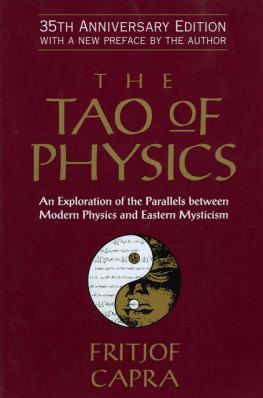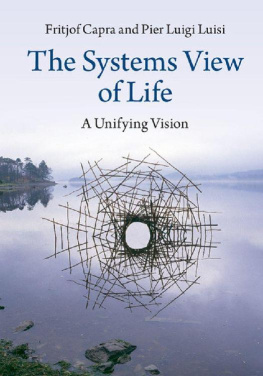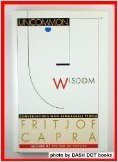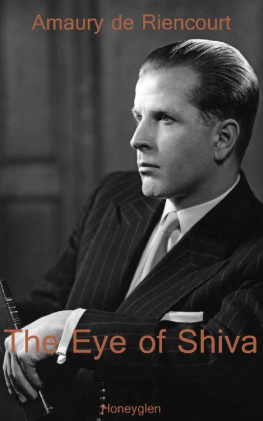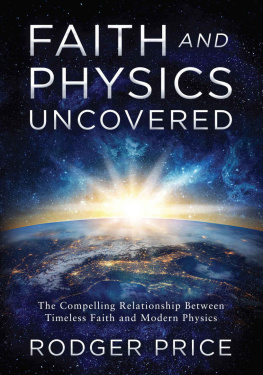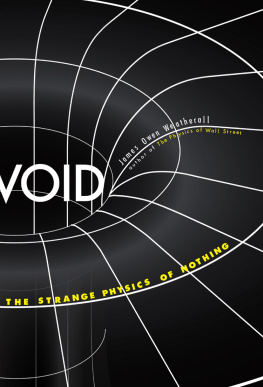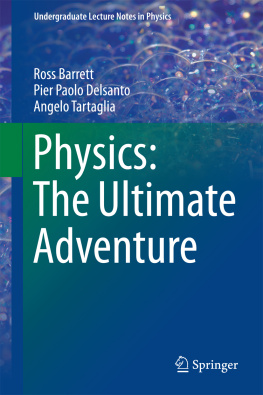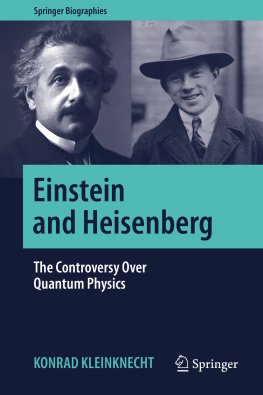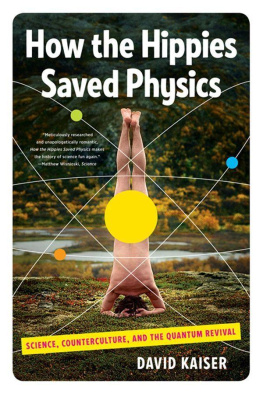A brilliant best seller. Lucidly analyzes the tenets of Hinduism, Buddhism, and Taoism to show their striking parallels with the latest discovery in cyclotrons.
New York magazine
A pioneering book of real value and wide appeal.
Washington Post
I have been reading the book with amazement and the greatest interest, recommending it to everyone I meet and, as often as possible, in my lectures. I think you have done a magnificent and extremely important job.
Joseph Campbell
ABOUT THE BOOK
Here is the book that brought the mystical implications of subatomic physics to popular consciousness for the very first timeway back in 1975. Many books have been written in the ensuing years about the connections between quantum theory and the ideas of Buddhism, Hinduism, and Taoism, but Fritjof Capras Tao of Physics serves as the foundation on which the others have been built, and its wisdom has stood the test of time. Its publication in more than twenty-three languages stands as testimony to its universal applicability, and its astonishing three and a half decades of strong sales to its enduring significance. This special edition celebrates the thirty-fifth anniversary of this early Shambhala best seller that has gone on to become a true classic. It includes a fresh cover design and a new preface by the author reflecting on further discoveries and developments in the years since the books original publication.
Physicists do not need mysticism, Dr. Capra says, and mystics do not need physics, but humanity needs both. Its a message of timeless importance.
FRITJOF CAPRA has done research in theoretical high-energy physics at the University of Paris; the University of California; Stanford University; and Imperial College, London. He holds a PhD from the University of Vienna. Dr. Capra is the author of five international best sellers: The Tao of Physics (1975), The Turning Point (1982), Uncommon Wisdom (1988), The Web of Life (1996), and The Hidden Connections (2002).
Sign up to learn more about our books and receive special offers from Shambhala Publications.

Or visit us online to sign up at shambhala.com/eshambhala.
THE TAO OF PHYSICS
An Exploration of the Parallels Between Modern Physics and Eastern Mysticism
Fifth Edition
by Fritjof Capra

| SHAMBHALA Boston 2013 |
Shambhala Publications, Inc.
Horticultural Hall
300 Massachusetts Avenue
Boston, Massachusetts 02115
www.shambhala.com
1975, 1983, 1991, 1999, 2010 by Fritjof Capra
Fifth Edition
All rights reserved. No part of this book may be reproduced in any form or by any means, electronic or mechanical, including photocopying, recording, or by any information storage and retrieval system, without permission in writing from the publisher.
The Library of Congress catalogues the previous edition of this book as follows:
Capra, Fritjof.
The tao of physics: an exploration of the parallels between modern physics and Eastern mysticism/Fritjof Capra.4th ed., updated.
p. cm.
Includes index.
eISBN 978-0-8348-2298-6
ISBN 978-1-57062-519-0 (25th anniversary edition)
ISBN 978-1-59030-835-6 (35th anniversary edition)
1. PhysicsPhilosophy 2. Mysticism.
I. Title.
QC6.C277 2000 99-35683
530.01dc21 CIP
I dedicate this book to
Ali Akbar Khan
Carlos Castaneda
Geoffrey Chew
John Coltrane
Werner Heisenberg
Krishnamurti
Liu Hsiu Chi
Phiroz Mehta
Jerry Shesko
Bobby Smith
Maria Teuffenbach
Alan Watts
for helping me to find my path
and to Jacqueline
who has traveled with me
on this path
most of the time.
PUBLISHERS NOTE
This book contains special characters throughout. If you encounter difficulty displaying these characters, please set your e-reader device to publisher defaults (if available) or to an alternate font.
This book was first published thirty-five years ago, and it originated in an experience, as described in the following preface, that now lies forty years in the past. It seems thus appropriate that I should say a few words to the readers of this new edition about the many things that have happened in those yearsto the book, to physics, and to myself.
When I discovered the parallels between the worldviews of physicists and mystics, which had been hinted at before but never thoroughly explored, I had the strong feeling that I was merely uncovering something that was quite obvious and would be common knowledge in the future; and sometimes, while writing The Tao of Physics, I even felt that it was being written through me rather than by me. The subsequent events have confirmed these feelings. The book was received enthusiastically in England and the United States. Though it had only minimal promotion or advertising, it spread rapidly by word of mouth and is now available in more than forty editions around the world.
The reaction of the scientific community, predictably, was more cautious; but there, too, the interest in the broader implications of twentieth-century physics has been increasing. The reluctance of modern scientists to accept the profound similarities between their concepts and those of mystics is not surprising, since mysticismat least in the Westhas traditionally been associated, quite erroneously, with things vague, mysterious, and highly unscientific. Fortunately, this attitude is now changing. As Eastern thought has begun to interest a significant number of people, and meditation is no longer viewed with ridicule or suspicion, mysticism is being taken seriously even within the scientific community.
The success of The Tao of Physics has changed my life dramatically. My professional career has broadened from that of a physicist (involved in theoretical research in particle physics) to that of a systems theorist, philosopher of science, and writer. Over the past thirty-five years, I have traveled extensively, discussing the philosophical and social implications of contemporary science with professional and lay audiences around the world. In doing so, I have consistently explored a single theme: the fundamental change of worldview that is now occurring in science and in societya change that is nothing less than the unfolding of a new vision of realityand the social implications of this cultural transformation.
I have published the results of my research in several books, some of them coauthored with colleagues and friends. (Please see my website, www.fritjofcapra.net, for my complete bibliography.) During the 1980s, I also became involved in environmental activism. In 1984, I founded an ecological think tank, called the Elmwood Institute, and over the next ten years we built up an international network of thinkers and activists from many fields and in many parts of the world. In 1994, we transformed the institute into an organization called Center for Ecoliteracy (www.ecoliteracy.org), which promotes a special pedagogy we call schooling for sustainability in primary and secondary schools.
Having worked as an environmental educator and activist for twenty-five years, I now have many personal contacts in the global network of NGOsa network of scholars, activists, and institutions that I called the rising culture in the 1980s, and which is now called by many social scientists the global civil society.
The main focus of my environmental education and activism is to help build and nurture sustainable communities, in which we can satisfy our needs and aspirations without diminishing the chances of future generations. To build sustainable communities, we can learn valuable lessons from the study of ecosystems, which
Next page
